#the dagda. | the druid king of war *
Explore tagged Tumblr posts
Text
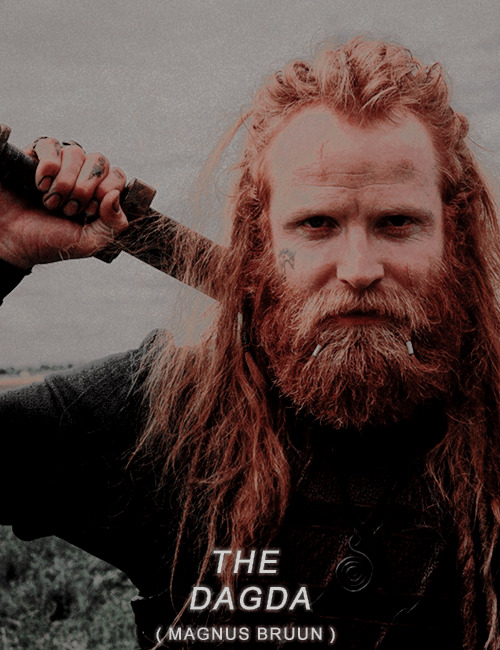
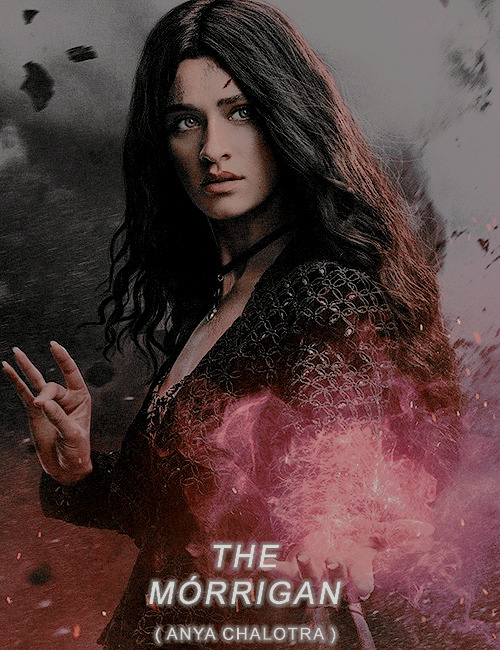
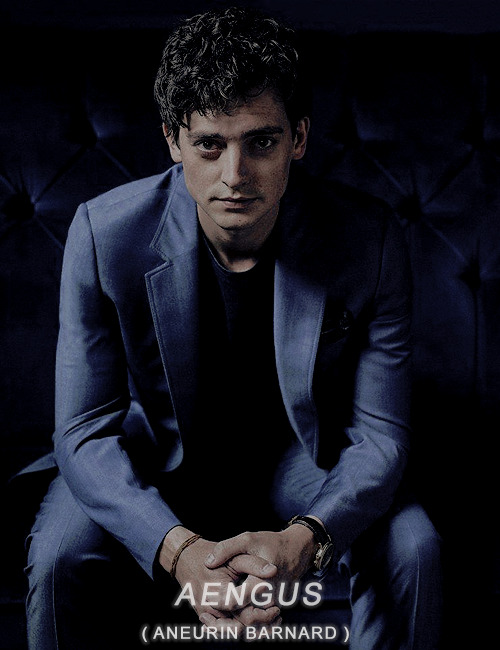
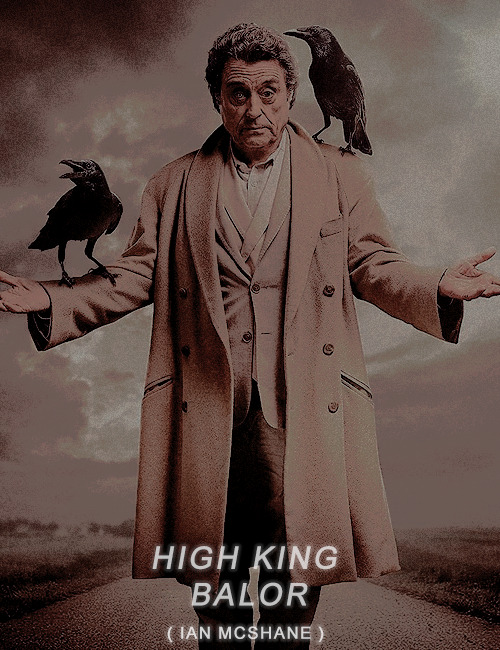
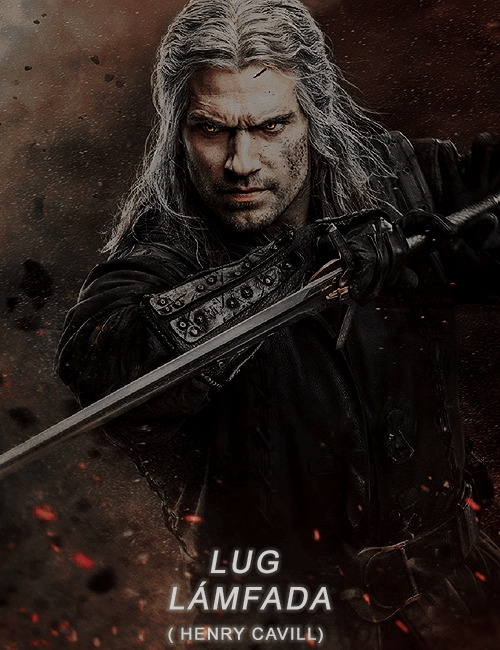
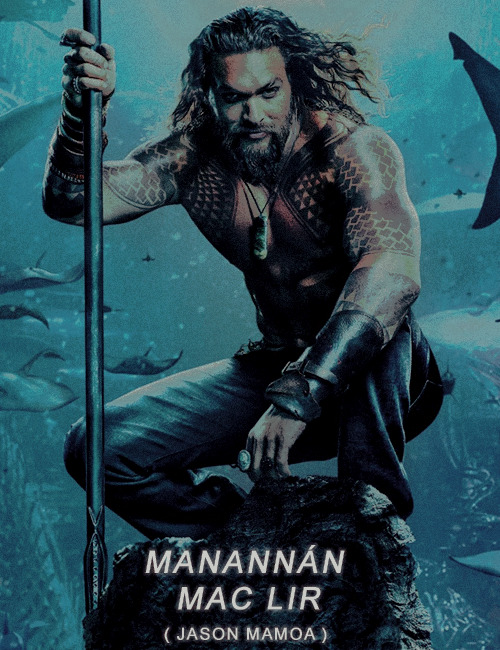
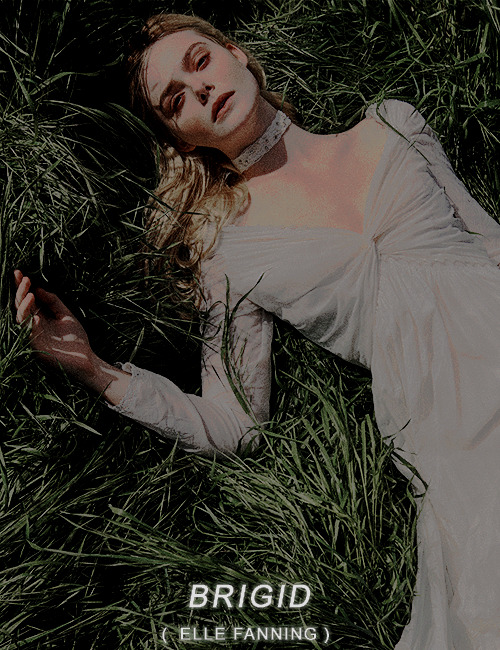
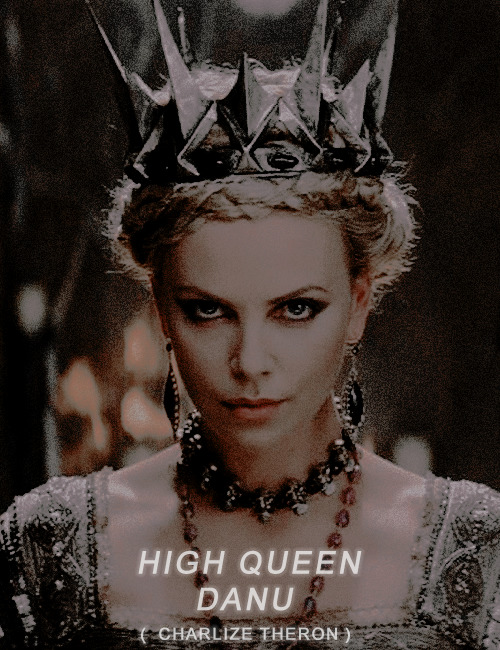
THE GODS OF THE SEELIE COURT & THEIR FCs // pt. 1
Balor - High King / Leader of the Fomorians/enemies of the Tuatha dé Danann
FC: Ian McShane from American Gods
Territory: all of Dubnos - AKA “the Hells”
Manannán mac Lir - Warrior King / God of the sea
FC: Jason Mamoa
Territory: Mag Mell & Emain Ablach ( island paradise of the Otherworld )
Aengus - God of youth, summer, love, and poetry
FC: Aneurin Barnard
Territory: Tír na nÓg
The Dagda - Chief/General of the gods
FC: Magnus Bruun Nielsen from The Last Kingdom
Territory: Mag Mell - land of greatness achieved through honorable death in battle
The Morrígan - Goddess Queen of war, magic, & death
FC: Anya Chalotra from The Witcher (main) Linda Cardellini (alt)
Territory: Mag Mell - land of greatness achieved through honorable death in battle
Lugh - Warrior King & God of the sun & arts
FC: Henry Cavill from The Witcher
Territory: Mag Mell - land of greatness achieved through honorable death in battle
Danu - High Queen of the faeries / head of the Tuatha dé Danann ( the people/children of the goddess Danu)
FC: Charlize Theron from Snow White and The Huntsman
Territory: all of Albios - AKA “the Heavens”
Brigid - Goddess of Healing, Fertility & Protection
FC: Elle Fanning from Sleeping Beauty
Terriroty: Tír na nÓg - paradise / “the land of youth, health, and beauty”
#the mórrigan. | fae queen of war & magic *#the dagda. | the druid king of war *#lugh tag tbh#canon & lore. | the fae *#canon. | world lore *#canon. | the seelie court *#canon. | the aos sí *#canon. | the otherworld *#i should make tags for all of them but nah#too much work atm lol#ooc. | * edits and art !#canon. | gods & goddesses *
18 notes
·
View notes
Text

Brigit, Druid Goddess Brigit is a ‘pan Celtic’ goddess, who was worshipped by both the Goidelic and Brythonic Celts in the British Isles and beyond. She is a solar deity, who once hung her mantle on a sunbeam. In Celtic mythology, Brigit is the daughter of the Morrighan and the Dagda, the Good God and Chief of the Tuatha de Danaan, the ancient fairy race of Ireland, and the sister of Ogma, who invented the Ogham alphabet. She was the wife of Bres, King of the Fomorians (who were at war with the Tuatha de Danaan). Brigit was said to have been the mediator of peace between the two ancient warring tribes. She was the mother of the Three Gods of Danu – Ruadan, Iuchar and Uar. These three Gods were said to have married the three princesses of Ireland – Eire, Fodhla and Banbha. In other sources, Brigid is the daughter of Boann, the Goddess of the River Boyne in Ireland. Boann (bo fhionn) means ‘white cow’, an association she shares with Brigid. Brigit is primarily the patron Goddess of poets, healers and smiths. She is also a patron of other womanly arts – midwifery, dyeing, weaving and brewing, and the guardian of children and farm animals – particularly cows. The island of Ireland itself is said to be the green mantle of Brigit. She is also said to be the patron of travellers, sailors, and fugitives. She is specifically a patroness to the Druids in her aspects of poetry (Bards), healing and prophecy (Ovates) and blacksmithing (Druids).
87 notes
·
View notes
Text
List of Druid Gods and Goddesses✨
Aine - (AN-yuh) Goddess of love, summer, sovereignty. Some said she was the daughter of Manannan, some said she was the Morrigan herself. Aine is very vengeful, and offending her is not wise.
Amaethon - God of agriculture, animal husbandry. Enemy of Arawn. Brother of Gwydion and Arianrhod.
Arawn - God of the dead, hunting, revenge. King of the underworld. Enemy of Amaethon. Possessed a magical cauldron of regeneration. Possesses many hounds who hunt for the souls of the dead.
Arianrhod - Goddess of beauty, fertility, reincarnation, the sky, weaving, enchantment. Keeper of the circling "silver wheel" of stars, a symbol of time and karma. Sister of Amaethon and Gwyddion.
Blodeuwedd - Goddess of flowers, lunar mysteries, wisdom. She was created from flowers by Math and Gwydion as a wife for the god Lleu. Gwydion later turned her into an owl for killing her husband.
Brigit - Goddess of fire, healing, motherhood, agriculture, inspiration, learning, divination, poetry, prophecy, the forge. An ever-burning fire is kept in her honor by nineteen priestesses. Imbolc is sacred to her. Sometimes considered a triple goddess: the Three Mothers. Also known as Brighid.
Cailleach - Goddess of disease, plague, sorcery. A hag, strongly associated with the crone aspect of triple goddesses. The goddess of winter, she brings snow until Brigit (spring) turns her to stone each year. The name means "veiled one."
Cernunnos - God of the hunt, animals, fertility, warriors, nature, commerce, love, the underworld. Known as "the Horned God." Stags are sacred to him.
Cerridwen - Goddess of enchantment, death, initiation, wisdom, inspiration, regeneration, dark prophecy. Moon Goddess, Great Mother and Grain Goddess. She brewed a magical potion of wisdom in her cauldron and forced the young Taliesin to stir it for a year and a day. When he accidentally swallowed the last three drops, he was transformed into a bard and grew very wise. Welsh bards once called themselves Cerddorion "sons of Cerridwen."
Dagda, The - God of the arts, knowledge, magic, music, prophecy, prosperity, regeneration, fatherhood, protection. Known as the "Good God" and "Lord of the Heavens," he succeeded Nuada as high king of the Tuatha De Danann.
Danu - Goddess of the elements (particularly water), magic, wisdom, the earth, cattle. Mother of the Tuatha De Danann, she is the most prominent mother goddess.
Diancecht- God of healing. Crafted a magical well which would resurrect to life anyone thrown into it, although the Fomorians filled it with stones. Had a son named Miach and a daughter named Airmed. See "Herbalism, the Legend."
Druantia - Goddess of fir trees, passion, protection, knowledge, creativity. Queen of the Druids and creator of the moon calendar. Often associated with motherhood.
Epona - Goddess of healing, prosperity, maternity. Protector of horses. Strongly associated with fertility.
Goibniu - God of the forge, brewing, thunder. Smith of the Tuatha De Danann, his weapons could not miss and were always fatal. His brew made the Tuatha De Danann invincible and healed all illnesses.
Gwyddion - God of enchantment, illusion, magic, music, shapeshifting, learning. Sometimes called the Druid of the Gods due to his interests. Brother of Amaethon and Arianrhod.
Gwynn ap Nudd - God of war, death, fallen warriors, the hunt. King of the Sidhe and the Otherworld.
Llyr - God of sea, water, the underworld. Father of Mannanan, who is generally considered more prominent. Also known as Lir.
Lugh - (Loo) Sun god of all crafts, the arts, healing, journeys, prophecy. His skills were without end, and they won him a spot in the Tuatha De Danann. He had a magic spear and otherworldly hounds. Lughnasadh is held in his honor. There are many tales about Lugh's exploits.
Manannan - God of the sea, weather, underworld. Son of Llyr. Shapeshifter. Separated the worlds of humans and faeries.
Morrigan, The - A shapeshifting goddess of magic, prophecy, revenge, war, death. Known as "Great Queen" and "Specter Queen," she often takes the form of a crow. Sometimes considered to be a Triple Goddess, her aspects are listed below.
Nemain - Maiden. Known as "venomous" or "havoc," she can
create hatred where there was none.
Macha - Mother. Known as "battle," associated with horses,
cunning, and protectors.
Badb (Bibe) - Crone. Known as "fury," "battle crow," and
"boiling," she confused warriors to increase slaughter.
Niamh - (Nee-av) Name means "radiance" or "brightness." Daughter of the sea god Manannan, she rode a white horse which could walk across the seas. See "Niamh's Story" for more information.
Nuada - (Noo-ada) God of harpers, healing, historians, magic, poets, warfare, writing. King of the Tuatha De Danann at one time, he had to step down when he lost his hand in battle; it was replaced by a silver one by Diancecht then one made of flesh by Diancecht's son Miach.
Ogma - God of eloquence, inspiration, language, magic, music, physical strength, poets, writers. Invented the Ogham rune alphabet and carried a huge club.
Taliesin - God of magic, music, poetry, wisdom, writing. Known as Prince of Song, Chief of the Bards of the West, and Patron of Druids, he was a great magician, bard, and shapeshifter who gained his wisdom from a potion brewed by Cerridwen.
#green witch#lunar witch#witchyvibes#gemini#witchy blog#magic#witchcraft#baby witch#druid#gods and goddesses
23 notes
·
View notes
Text
The Irish Gods pt. 1
After reading several texts, I've painted this picture of the Irish gods.
There is the war god Net. His descendants procreate with his granddaughter Ethniu. She has 7 sons: the smith, the carpenter, the wright, the physician (Dian Cecht), the king (Nuada), the druid warrior (the Dagda), and the god of every skill (Lugh).
Elatha, Net's grandson, is a Fomorian king. He is father to Bres, the Dagda, and Ogma the champion; though, one text makes Ogma the son of Ethniu.
The gods lived in islands in the northern parts of the world where they learned all their magic, sciences, and art.
They invaded Ireland. They sailed there, and clouds shielded their arrival.
They had four treasures: the cauldron that everyone left satisfied from, the spear no one could defeat, the sword that nothing could escape from, and the stone of destiny that shouted when the true king of the land put his foot on it.
They battled the Firbolg, the existing inhabitants, for Ireland. The Morrigan and her sisters cast clouds and rain of fire and blood over the Firbolg. The gods defeat the Firbolg. (The Firbolg and gods have common ancestors).
Nuada loses his hand in battle. A blemished king can't rule. Bres is made king in hopes his Fomorian side would render the Fomorians under the gods' power.
The smith god made a silver hand. Dian Cect attached it to Nuada, making a working silver hand.
One text says Bres was a bad king. He chose the Fomorian side of his family. He made the Dagda build forts and Ogma carry wood. There was no food or drink at his court. The gods were taxed heavily, and all their wealth went to the Fomorians.
Miach, Diancecht's son, restores Nuada’s real flesh hand, unburying it, attaching it, and restoring it completely. Nuada is able to be king again. Diancecht was upset at Miach, so he killed him. From his grave grew healing herbs. His sister gathered the herbs on a cloth, but Dian Cecht mixed them, and their healing knowledge was lost.
A poet made a satire about Bres. It embarrassed him and brought him dishonor. The gods told him they wanted to remove him as king. He went to his dad Elatha for help to battle gods. Elatha refused. Bres went to the Fomorian Balor for help. (Balor is the war god Net's son).
Meanwhile, Balor's grandson, Lugh, son of Ethniu and the god Cian (Dian Cecht’s son) comes to the god's court. They don't let anyone in without a skill. Lugh was the only one that had all the skills put together. They let him in. He was stronger than Ogma, and Nuada put him in charge of the war.
The Dagda slept with the Morrigan at the mouth of a river. Afterward, she gave him war intel and told him her plan: to kill one of the Fomorians. (Some texts say the Dagda and Morrigan are married to each other).
The Dagda’s daughter, Brigid, is married to Bres. She owns the king of the cows and king of the pigs. They cry out when Ireland is being plundered. Her son with Bres is a spy. The son is killed by the gods, and Brigid is the first to cry and scream in mourning in Ireland.
The war was on. Dian Cecht and his kids made a healing well, filling the water with herbs. Anyone wounded who bathed in it was healed. Only people with their head cut off or brains bashed in could not be healed. The smith god and his brothers magically repaired the gods' weapons by the next day of battle.
Lugh defeated Balor in battle. Balor had an "evil eye." Whatever it looked upon was destroyed. Lugh hit the eye with his sling shot. The eye shot through the back of Balor's skull and killed several many Fomorians.
They spared Bres' life if he agreed to teach them the times to plant and harvest.
Nuada had died in battle, and Lugh was made king.
See pt. 2
#irish mythology#tuatha de danann#irish myth#pagan#irish lore#celtic myth#goddess#the morrigan#irish gods#witchblr
43 notes
·
View notes
Text
LORE DUMP
How Fae Hierarchy works:
There are major Fae Queens and Kings, each one has their Court, there are minor elemental Faeries who are separated from the Courts with their leaders but they answer to the Kings and Queens too. It works a lot like King Arthur and the Round Table: thr Major Sovereigns form a council and the leaders of the council are Dagda, God of Earth and Morrigan, Goddess of War.
The other Majors are:
Brigid: Goddess of Spring, Summer, and Protector of cattle, domesticated animals and farmers
Aengus: God of Love and Poetry
Irbomertih: Goddess of Dreams and Aengus' wife
Cerunnos: God of the Wilderness and Druids
Manannan McLir: God of the Ocean
Goibhnu: God of Artisans and Blacksmiths
Beira Cailleach: Goddess of Autumn and Winter
Beira has been killed by Lilyanne Crom Cruach's Sorceress and Prophet, but her spirit is still lingering in her staff, which the Sorceress stole after murdering her with Crom's Death-Bringing crystal eye.
Crom wanted to become a Major Sovereign because he has power to give life and take life via equal exchange and so he thought he was as important as anybody else, but got shunned by the others because of his tyrant-like demeanor and because he doesn't even NEED humans as a sacrifice for his magic to work. He just enjoys being worshipped and seen as superior.
5 notes
·
View notes
Text
Eldest, Morrigan

“Morrigan” © Natalia Nesterenko, accessed at her ArtStation here
[Commissioned by @hiswrathundoesthewicked. This is, to my knowledge, the first attempt at giving one of the Eldest, the fey equivalent of demigods in Pathfinder, a stat block. I borrowed formatting and abilities from the demon lords and empyreal lords in order to do so. Morrigan, or the Morrigan, is an Irish goddess of war and death, and casts a long shadow over modern interpretations of Celtic myth and culture, neopaganism, and the concept of fey in fantasy. So much so that there’s already two Eldest canonical to Pathfinder, Madgh and Shyka the Many, that poach some of her flavor. So I had to make sure that this Morrigan stood out and had a niche.
She also casts a long shadow over horny artists on the internet, although she does come by it more honestly than some other mythological figures. In surviving myths, she does try to seduce Cúchulainn, who refuses her, and has sex with the god Dagda before his battle with the fomorians. Both a Darkstalkers character and a Dragon Age character are named Morrigan in her honor, and both of them wear very revealing clothing. Most artistic depictions of the actual goddess Morrigan also involve deep cleavage, open robes and boobplate. Part of the reason I chose this art was because it looks regal and fierce and not at all sexualized.]
Morrigan The Phantom Queen, Queen of Crows N Eldest Fey of battle, death and scavengers Domains Animal, Death, Luck, War Subdomains Blood, Fate, Feathers, Tactics Worshippers druids, tengu, warriors Minions norns, valkyries, vilderavns Holy Symbol bird skull with blood painted over the eyes Favored Weapon bastard sword Obedience Wash your hands, face and weapons in blood. This can be your own blood or someone else’s. Gain a +4 sacred bonus on saves vs. death effects Feysworn Boons 1. Battle Gift (Sp) deathwatch 3/day, spiritual weapon 2/day or vampiric touch 1/day 2. Fight On (Su) You gain ferocity as a supernatural ability. 3. Death to All Foes (Sp) You can cast wail of the banshee once per day.
Eldest, Morrigan CR 28 N Fey This woman is statuesque and muscled, with a cruel beauty. She appears almost entirely human, except that her hands are stained red and end in bird like talons instead of nails. She wears an iron crown and a cloak of black feathers.
Morrigan the Phantom Queen is the fey patron of warfare. Unlike many other powers of war, she is stridently neutral, giving succor or inflicting banes on warriors of any creed, cause or alignment as she sees fit. Her primary interest in war is in generating the dead and feeding her beloved beasts, scavengers all. Although in different places she may be associated with boars and eels, vultures and hyenas, her favorites are the crows, who act as her eyes and ears in the sky, and in whose feathers she is perpetually adorned.
Morrigan is more interested in turning the tides of battles than in fighting herself. She frequently visits battlefields in the form of a crow, using her spell-like abilities and curse of unluck to make a peasant into a hero, a king into a fool, and generally make wars more deadly and more interesting. She may offer her services intentionally to a warrior in exchange for some favor, but just as often bestows her gifts capriciously. In combat, she is deadly with sword and bow, and the grievous wounds she inflicts delay healing from all sources. Morrigan never fights to the death if she can help it, as there are so many other battles to influence and decomposers to feed.
The creatures that serve Morrigan come from all manner of alignments, interpreting her silences and cryptic pronouncements as they see fit. Norns attempt to weave her battles into their tapestries of fate, and she is on good terms with Madgh, their patron. Valkyries and einherji fight for her glorious honor, and take the finest warriors to join their ranks when they die. Vilderavns use her doctrines to destabilize nations and sew dissent among armies. Morrigan has cordial relations with the psychopomps, as she has little interest in the flow of souls. The Horseman of War despises her and views her as competition, but Morrigan pays that position little mind.
Morrigan CR 28 XP 4,915,200 N Medium fey (Eldest, extraplanar, shapechanger) Init +10; Senses lifesense 60 ft., low-light vision, Perception +51 Defense AC 47, touch 31, flat-footed 47 (+10 Dex, +6 deflection, +13 natural, +8 armor) hp 682 (35d6+560); regeneration 20 (deific or mythic) Fort +29, Ref +30, Ref +29 DR 20/epic and cold iron; Immune ability damage, ability drain, charms, compulsions, curses, death effects, energy drain, fear, poison; Resist acid 30, cold 30, electricity 30, fire 30; SR 39 Defensive Abilities cloak of feathers, ferocity, freedom of movement, improved uncanny dodge, recovery Offense Speed 30 ft., fly 60 ft. (good) Melee +5 adamantine bastard sword +36/+31/+26/+21 (1d10+20/17-20), claw +25 (1d6+7 plus curse of unluck) or 2 claws +30 (1d6+13 plus curse of unluck) Ranged +5 adaptive composite longbow +33/+28/+23/+18 or +31/+31/+26/+21/+16 (1d8+20/x3) Special Attacks festering critical Spell-like Abilities CL 28th, concentration +39 Constant—freedom of movement, shield of faith At will—astral projection, bestow curse (DC 25), greater teleport, haste (M), heroism (M), rage (DC 24), threefold aspect, vampiric touch (M) 3/day—blade barrier (DC 27) (M), finger of death (DC 28) (M), geas/quest, greater dispel magic, heal (DC 27) (M), harm (DC 27) (M), quickened mass bull strength, summon fey, transformation (B), vision 1/day—animal shapes, mage’s disjunction (M), power word kill (M), wail of the banshee (DC 30) (M) = can use the mythic version of this spell-like ability in her fey realm Statistics Str 36, Dex 31, Con 42, Int 30, Wis 29, Cha 33 Base Atk +17; CMB +28 (+32 disarm, sunder); CMD 58 Feats Alertness, Combat Expertise, Combat Reflexes, Deadly Aim, Disruptive, Exotic Weapon Proficiency (bastard sword), Great Fortitude, Greater Disarm, Greater Penetrating Strike, Greater Sunder, Greater Vital Strike, Improved Critical (bastard sword, longbow), Improved Disarm, Improved Sunder, Improved Vital Strike, Penetrating Strike, Point Blank Shot, Power Attack, Precise Shot, Quick Draw, Quicken SLA (mass bull strength), Rapid Shot, Spellbreaker, Vital Strike, Weapon Focus (bastard sword, longbow), Weapon Specialization (bastard sword, longbow) Skills Acrobatics +48, Bluff +49, Diplomacy +49, Disguise +49, Fly +52, Heal +44, Intimidate +46, Knowledge (local, nature) +48, Knowledge (history, nobility, religion) +45, Perception +51, Sense Motive +51, Stealth +48, Survival +44 Languages Aklo, Auran, Celestial, Common, Infernal, Elven, Necril, Sylvan, telepathy 300 ft. SQ battle gift, change shape (animal, giant or humanoid, greater polymorph), Eldest traits, visions of murder, warrior fey Ecology Environment any land Organization unique Treasure double standard (+5 adamantine bastard sword, +5 adaptive composite longbow, 60 arrows, other treasure) Special Abilities Battle Gift (Sp) Morrigan can use her transformation spell-like ability as if it had a range of touch. Cloak of Feathers (Su) When wearing a garment made out of feathers, Morrigan gains a +8 armor bonus to AC without a maximum Dex bonus or armor check penalty, and a fly speed of 60 feet with good maneuverability. This is an effect of Morrigan, not her cloak. Curse of Unluck (Su) Claw—injury; save Will DC 38; frequency 1/hour; effect target must reroll any roll decided by the GM and take the worse result; duration until removed. The save DC is Charisma based. Morrigan also inflicts this curse with her natural weapons when assuming a form with natural weapons using change shape. Eldest Traits (Ex, or Sp) Morrigan is one of the Eldest, powerful fey lords that rule over domains of the First World. The Eldest have the following traits
The Eldest can grant spells to their worshipers, granting access to four domains and four subdomains
An Eldest’s natural weapons, as well as any weapon they wield, are treated as being epic and any alignment possessed by the Eldest
Immunity to ability damage, ability drain, charm effects, compulsion effects, energy drain and fear effects
Regeneration (Ex) Only damage from a deific or mythic source can deal permanent damage to the Eldest
Rejuvenation (Ex) When an Eldest is slain, they return to life in its realm in 1d10 days. An Eldest may only use this ability once per year—if they are slain again in the meantime, they are slain for good.
Summon Fey (Sp) Three times per day as a standard action, an Eldest can summon up to a CR 20 encounter of fey creatures or Tane (such as bandersnatches, jubjub birds, thrasfyr, sards, etc). This is the equivalent of a 9th level spell.
Festering Critical (Su) Whenever Morrigan confirms a critical hit made against an opponent, that foe must succeed a DC 38 Will save or be unable to heal physical or ability damage from any source for 1 minute. Multiple failed saves increase the duration. This is a curse effect, and the save DC is Charisma based. Recovery (Ex) At the end of her turn, Morrigan can automatically shake off any one condition affecting her except for dead. If she is suffering from multiple conditions, she chooses which to remove each round. Visions of Murder (Su) By concentrating, Morrigan can see through the eyes of any crow within 100 miles that she chooses. Warrior Fey (Ex) Morrigan gains 11 bonus combat feats, and is treated as being a 20th level fighter for the purposes of qualifying for feats. She is proficient in all simple and martial weapons, in shields and in all armor.
Fey Realms An Eldest gains the following additional powers while in its realm (the statistics above do not include these abilities):
Mythic: An Eldest functions as a 10th mythic rank creature, including the mythic power ability (10/day, surge +1d12). It may expend uses of mythic power to use the mythic versions of any spell-like ability denoted with an asterisk (*) just as if the ability were a mythic spell.
Use of the following spell-like abilities at will—demand, discern location, fabricate, major creation, and polymorph any object (when used on objects or creatures that are native to the realm, the polymorph duration factor increases by 6).
Use of the following spell-like abilities once per day—dimensional lock*, miracle (limited to physical effects that manipulate the realm or to effects that are relevant to the Eldest’s areas of concern)
Heightened Awareness (Ex): An Eldest gains a +10 insight bonus on Perception checks and Initiative checks.
93 notes
·
View notes
Note
Since Britannia's and Caledonia's people perceived them as gods, did their people ever associate them with things like other gods are? Like the Morrigan with war and victory in battle or Rhiannon with horses and sovereignty.
Celt
Dagda- father-figure, king, and druid. He is associated with fertility, agriculture, manliness and strength, as well as magic, druidry and wisdom.
Aengus- associated with youth, love, summer and poetic inspiration
Cernunnos- represented nature, flora and fauna, and fertility.
Brit
Mórrígan- associated with war and fate, especially with foretelling doom, death or victory in battle
Brigid- Goddess of Healers, Poets, Smiths, Childbirth and Inspiration; Goddess of Fire and Hearth and a patron of warfare
Danu- mysterious goddess associated with rivers.
#this has been sitting in my drafts for ages#my apologies#aph britannia#aph ancients#aph england#aph scotland#aph wales#aph ireland#aph northern ireland#aph celt#hetalia#aph caledonia#yes these are taken from the Tuatha Dé Danann#i have nothing more to add#boring post i know
25 notes
·
View notes
Text
Irish Gods and Goddesses (That I Remember)
Aine: Goddess of Summer, Wealth and Sovereignty, has also been a Goddess of Love and Fertility Aengus Og: God of Youth, Love and Beauty Anu/Danu: Mother Goddess/Ancestor of the Tuatha Dé. The Victorians associated her with the land Badb: Goddess of War and sister of The Mórrígan Banba: Patron Goddess and wife of Mac Cuill (his given name was Éthur) Bel: Sun and Fire God closely associated with Beltane. Also the patron deity of the Italian city of Aquileia Bodb Derg: Son of Dagda and his successor as King of the Tuatha Dé. He’s the King of the sídhe of Munster and Fionn’s wife, Sadhbh, is believed to have been his daughter Boann: Goddess of the River Boyne and mother of Aengus Brigid: Daughter of The Dagda and wife of Bres. Associated with Spring, Fertility, Healing, Poetry and Smithcraft. “The goddess whom poets adored.” St Brigid is believed to be a Christianization of her Caer Ibormeith: not a Goddess herself but she is the wife of Aengus and some claim her to have been Diarmuid’s foster-mother as a result Cailleach: A Divine Hag, Creator, Weather and Ancestor Deity who determined the length and harshness of winter. Largely popular with poets! Cernunnos: Horned God. A lack of surviving literature about him makes it hard to tell what exactly he was the God of but he’s associated with stags, horned serpents, dogs, bulls and rats and is usually depicted sitting cross-legged, naked and with antlers The Dagda: He is associated with Fertility, Agriculture, Manliness and Strength, as well as Magic, Druidry and Wisdom. He can control life and death, the weather and crops, as well as time and the seasons. Portrayed as a father-figure, king and druid, he’s arguably the most important God in Irish myth. Dian Cecht: God of Healing and the paternal grandfather of Lugh and son of Dagda. He was the Tuatha De’s physician Donn: God of The Dead, father of Diarmuid ua Duibhne, and believed to be an aspect of Dagda. He’s also the Ancestor of the Gaels Ériu: Matron Goddess. Ireland’s name “Erin” is derived from her own. Sister of Banba and mistress of Lugh Fódla: Sister of Banba and Ériu. A Giantess of Ireland Flidais: Goddess of Cattle and Fertility Goibniu: Smithing God and associated with Hospitality, he was the personal metalsmither of the Tuatha De and even made Nuada an arm of silver when he lost his own in battle Llyr/Lir: Apart from odd tiddbits, his identity remains obscure though we do know that he’s the father of Manannán Lugh: God of Oaths, Truth and Law and believed to have been a Sun God, he’s the father of Cú Chulainn Macha: Sovereignty Goddess and one of the Goddesses thought to have made the Mórrígan, several figures with her name show up in Irish myth and folklore all of whom are believed to derive directly from her Manannán mac Lir: God of the Sea, over-king of the surviving Tuatha Dé and Ruler and Guardian of the Otherworld, he’s a close friend of Aengus and co-raised Diarmuid with him in the Land of Promise The Mórrígan: Shapeshifting Goddess associated with War and Fate, especially the Foretelling of Doom, Death or Victory in battle, she’s the wife of Dagda and it is said that all of her prophecies come true Neit: God of War and husband of Nemain and/or Fea, and sometimes Bodb. Grandfather of Balor Nemain/Neman: Goddess who personified the frenzied havoc of War, in ancient texts Nemain sometimes appears as one of the Goddesses who make up The Mórrígan Niamh: Daughter of Manannán and one of the queens of Tír na nÓg, she’s the lover of Oisín, son of Fionn mac Cumhaill Nuada: The first king of the Tuatha De and husband of Boann, he was most likely a god of Hunting and Fishing Ogma: Brother of Dagda, he was the inventor of Ogham, the script in which Irish Gaelic is written
#mythology#I got bored and decided to do this#these are just the ones I remember#I'm sure there's a bunch that aren't on here#anyway now you have a bunch of names you can look into if you want!#god this took forever#remembering how to spell them all is A Challenge
387 notes
·
View notes
Text
Which Goddess are you? [Celtic Edition]

Áine
Goddess of summer, wealth, sovereignty, love, protection, and fertility. Áine is thought to mean “brightness, glow, joy, radiance, splendour, glory, fame”. She is associated with Midsummer, the Sun and Moon; the element Air; the direction South West; one of the sacred herbs of Druids, Meadowsweet; and County Limerick, where the hill of Knockainy (Cnoc Áine) is found. In her role as Sun Goddess, she could take the form of ‘Lair Derg’, a red mare that no one could outrun, in order to walk among her people. Her sacred animals are red mares, rabbits, and swans. Áine is thought to be the daughter of King Eógabail/Eoghanach, a member of the Tuatha Dé Danann and the foster son of the sea god Manannan Mac Lir. Other sources state that she is the daughter of the Dagda and sister to Brigid. She is also thought to be the sister of Aillen and/or Fennen. Áine was also known as a Love Goddess, and people would worship her in the hope that she might bestow sexuality, fertility, abundance and prosperity upon them. Through her many relationships with human men, she is thought that she gave birth to a magical Faerie-Human race, which is how she gained her name as Queen of the Faeries. One of the myths surrounding Áine describes how she sat in her birthing chair on Lughnasadh and gave birth to a sheave of grain. It is believed that by performing that act, Áine gave the gift of grain to the people of Ireland.
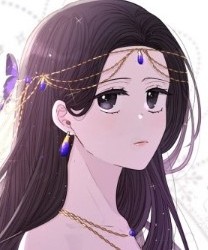
Branwen
Goddess of love and beauty.
Branwen, Daughter of Llyr, was a Goddess of Love and Beauty who features in the Second Branch of the Mabinogi, which tells the tale of how war broke out between Wales and Ireland. She is a daughter of Llyr and Penarddun and is married to the King of Ireland, Matholwch. Branwen one of the triple goddesses of Avalon along with Cerridwen and Arianrhod. Branwen translates as white raven. She is the maiden aspect of the triple goddess as seen as a beautiful young woman. She is springtime and inspiration and the daughter of the sea. She releases mistreated wives from bondage and blesses them with new beginnings. She is associated with Aphrodite and her Roman counterpart, Venus. Her sacred animals are ravens, crows, doves, sparrows, and starlings. Her symbols are cauldrons, cups, starlings, and the waxing moon.
Tagging: @tetsuwan-atom, @sphinxsmuses, @bluehaired-tales, @fxtelism & anyone else up for this! :D
#『Roll the Dice and Hope for Snake Eyes - Quizzes and Games』#{In Darkness blooms the Spider Lily - Sue Musings}#{Noble dresses hide a Playful little Girl - Ann Musings}#alright that all of them I'll stop now#XD
2 notes
·
View notes
Photo

-Cethlenn, the fomorian queen- In Irish mythology, Cethlenn is the queen of the fomorians, a mysterious race of monstrous sea-raiders who terrorized Ireland during ancient times. They had a complicated relationship with the Tuatha de Danaan, the pantheon of Irish gods, with sometimes the two races being in friendly terms, some even in romantic relationships, and others with both acting as fierce enemies. She was known by the title "of the Crooked Teeth" and was married to Balor "of the evil eye", the great king of the fomorians, commanding alongside him their hordes in their quest for destruction. Cethlenn was the one who informed her husband about a prophecy in which he would be defeated in battle by his own grandson, claiming that after his arrival they "would never have any power over Ireland again". To prevent this, they locked their only daughter, the princess Ethniu, in a glass tower in the middle of the ocean, so that she would never meet with any man in her life and never have a son. Ethniu grew completely ignorant about the outside world, being raised only by her female servants, who refused to answer about what lied beyond the tower. One day, however, the god Cian of the Tuatha de Danaan had his magical cow stolen by Balor while disguised as a kid, and he swore revenge against the fomorian king. With the help of a friendly druid, he managed to invade one of Balor's fortress in search of his animal, arriving at the glass tower where Ethniu lived. They both fell in love and spent the night together, with Cian leaving the following day before he was discovered by one of Balor's servants. Ethniu ended up becoming pregnant after this encounter, giving birth to triplets. Furious, Balor attempted to drown his grandsons, but one managed to survive, being carried and raised among the Tuatha de Danaan. That child ended up growing to become Lugh, the heroic sun god of war, who became one of the Tuatha's champions in their war against the fomorians. Cethlenn fought alongside her husband against the gods, even managing to wound the god Dagda with her spear, but they were no match against Lugh. With Balor defeated, the fomorians were banished from Ireland forever.
#Cethlenn#Balor#Fomorian#Tuatha de Danann#irish mythology#irish folklore#ireland#Character Design#mythology#folklore#Shin Megami Tensei#shin megami tensei v#persona#persona 5
47 notes
·
View notes
Text

Name: Lugh Kanji: ラ Alias: Lug or Luat Face Claim: Jack Vessalius Seiyuu: ... Age: Immortal Zodiac: ??? Sex/Gender: M/M Height: 191cm 「6'3"」 Weight: ???kg 「???lb」 Blood Type: Ichor
Servant Info (will update at a later time)
Attribute: Sky or Earth Class: Lancer (can also be summoned as a Saber, Archer, or Rider) Alignment: Lawful Neutral(?) Traits: Diving, Humanoid, King, Male, Pseudo-Servant, Servant, Weak to Enuma Elish Singularity: N/A Likes: ??? Dislikes: Bres, Tuireanna's Sons Talents: Carpentry, Blacksmithing, Warrior, Poet, Harpist, Scientist, Physician, Sorcerer, and Sculptor Cards: Buster, Buster, Quick, Art, Art │ Extra Hits: 4, 4, 2, 3, 3 │ 4
Lore
Lugh (pronounced Loo), is a Celtic (Irish) God of many many many talents (or skills). He is the god of oaths, granting domain over rulers and nobility. A god of justice in many forms, often without mercy. A sun god (as he was worshiped as such) as well as a fierce warrior. Let’s not stop there, he was also known as a god of storms, in particular to thunderstorms. Last, but certainly not least a god of light and god of all arts and crafts.
Despite some of his wholesome roles, Lugh has also been known to be a trickster, willing to lie, steal, and cheat to overcome his opponents. This is quite the contrast to his son Cú Chulainn who is born later in his lore.
“What are his talents?” one may ask, his talents just to name a few are those of a carpenter, a master blacksmith, a warrior, poet, harpist, scientist, physician, sorcerer, and sculptor. He is one who can do all of these. Due to his many talents Lugh is typically associated with the Greek god Hermes/Roman god Mercury and to some degree Apollo through his association with Lugus. Then there the possibility of him also being a triple god comprising of the Gaulish gods Esus, Toutatis, and Taranis.
He associated with the raven, crow, and lynx, and has a magical hound. Aside from this Lugh has several magical weapons as his disposal including an invincible Spear, one of the treasures of the Tuatha Dé Danann. The spear is said to never missed its target (sound familiar?) was called Gae Assail, Areadbhar, or “the Slaughterer” (depending the writing). It said the spear was so bloodthirsty it would often try to fight without its owner. According to other stories would fight anyone wielding it. Due to Lugh being a god known for his many skills he was called many things such as Lugh Lámhfhada (Lugh of the Long Arm), Lleu Llaw Gyffes (Lleu of the Skillful Hand), Samildánach (Skilled in All the Arts), Lonnbeimnech (fierce striker, sword-shouter) or Macnia (boy hero).
Descended from two bloodlines, Lugh is the son of Cian, the son of Dian Ced, healer of the Tuatha Dé Danann and Ethniu, the daughter of King Balor of the dreaded Fomorians. Cian had disguised himself as a Druidess entered Balor’s stronghold, where Eithne (Balor had his daughter locked up for reasons…) lived and seduced her. In time this fruitful relationship between Cian and Eithne produced triplets. Due to a prophecy from a druid that said Balor would be killed by the hands of a grandson. The main reason to why he locked up his daughter to begin with. Practically had her raised in a tower being unaware of men.
In order to avoid the prophecy from coming true Balor gathers the triplets into a blanket and orders them to be drowned in a whirlpool. Lugh is the only to have survive his would be death. As luck would have it the messenger that had carried him and his siblings to their death had unwittenly dropped him in the harbor where he rescued by Biróg. She brings the baby Lugh to her father and the father then gives him to his brother, Gavida the smith, in fosterage.
Gavida is one of many foster parents to Lugh as his foster parents varies depending on different stories: the Irish sea god, Manannán mac Lir; Tailtiu, Queen of the Firbolg; and of course, Gavida, god of the smiths.
When still a young man Lugh had travelled to the Hill of Tara to join the court of King Nuada, the high king of Ireland. Lugh wanted to join the Tuatha Dé Danann in their fight against the Fomorian King Balor. King Balor had been governing the Tuatha dé Dananna unfairly. He wanted to join them despite being half Fomorian. Due to being half of a hated enemy he wasn’t particularly trusted.
One day he arrived at the gate of King Nuada’s palace as a stranger. At first he was denied entrance into the hall, because no one could enter (or were admitted) without being the master of some craft. The gatekeeper doing his job inquired about Lugh’s profession and the conversation between them proceeded as such:
“I am a carpenter,” said the stranger.
The gatekeeper replied that the king already had a skilled carpenter and had no need of another.
“Then tell the king I am a master smith.”
“We already have a smith,” answered the gatekeeper.
“Then I am a warrior, too,” said the stranger.
“We do not need one,” replied the gatekeeper. “The great Ogma is our champion.
”The stranger proposed all possible professions he mastered, even poet, harpist, scientist, physician, sorcerer and sculptor. Each time, he was told that the king Nuada already had such a professional at court.
“Then ask the king,” said the stranger (Lugh) to the gatekeeper, “if he has with him a man of all these crafts at once, for if he has, there is no need for me at Tara…”
With this Lugh had managed to charm his way into the court and into the highest position one could possess in the court of a king: that of the Chief Ollam. This position afforded Lugh much of the same reputation and attributes only afforded to the king.
Lugh would eventually become the salvation (or bring it) for the Tuatha dé Danann. Nuada had put Lugh in charge of the coming war against the Fomorians. With Lugh being determined the Tuatha dé Nuada take an offensive stance rather than a defensive one to approach Fomorians. The war could not proceed when the First Battle of Moytura took place in the Country of Galway against the Firbolg. It was during this battle that Nuada had lost his hand, forcing him to step down as High King, because a kingdom could not be blemished. His replacement was a Bres, a half-Fomorian (or Fomorian-favoring) who ended up delaying the against his kin.
Meanwhile Cian had met his end by the hands of Tuireann, his great foe. The sons of Tuireeann’s, Brain, Iuchar, and Iucharba had hunted down Cian. At the time Cian had transformed into a big. Before the final blow was struck upon his person, Cian had turned back into his human form. This would grant Lugh a right to seek revenge for his father. The sons attempted to bury Cian, but twice the ground spat him back up. They managed to bury him on the third try. It was by chance that Cian came upon his father’s grave. Lugh asked the ground who laid there and replied it was his father’s grave. From there he started to plot his revenge.
Revenge was set into motion when he invited the sons of Tuireann to a grand feast. Unaware of what was about to happen to them a question was asked what they would require if someone murdered their father. Of course, they replied that death was only answer. Surprise surprise, falling into his trap like he thought they would, Lugh revealed he was Cian’s heir and demanded the same justice. Being a god of games, a series of tasks was given and each task was overcome. The last and final task given was an impossible one and Tuireanna pleaded for mercy on his sons, Lugh unfortunately for Tuireanna, would not relent. The final task wounded each of them and Lugh had withheld their magic pigskin that would have healed the wounds. This was how the Tuireann’s sons had died. In his own grief Tuireann died as well giving Lugh the justice and victory over his father’s enemies.
Even though Bres’ was married to Brigid of the Tuatha, the Tuatha dé Danann were enslaved once more. This further injured the already strenuous relationship between the two groups. Bres’ reign lasted for twenty-seven years.
Lugh’s grandfather and uncle crafted a silver hand and then a hand of flesh for Nuada, thus removing his blemish. He then took back the throne from Bres and Bres was than exiled. After Lugh had finished planning for the war he sought the council of the Phantom Queen, the Mórrígan. A Second Battle of Magh Tuireadh then took place.
During the battle Nuada was beheaded by Balor of the Evil Eye, but Lugh had managed to secure their victory in the end. He had killed Balor with a sling-stone and shot him straight in the eye that sank into Balor’s brain and then cut of his head. This incident wrecked chaos among the Fomorian soldiers and fulfilled the prophecy saying that Balor would be killed at his grandson’s hand. Lugh was placed in power and Bres was subjected to teaching the Fomorian enemies the skills of harvest. This was a very menial and insulting task compared to his once all-powerful position.
Lugh became King and reigned over a united Ireland.
Bres was eventually killed in the form of hospitality of receiving three hundred wooden cows filled with poisoned red milk. He didn’t deny the hospitality and drank each pail of milk without hesitation and died.
Eventually Lugh would meet his own end after his wife Buach took Cermait, son of the Dagda, as a lover. Cermait was then killed by Lugh upon discovering this affair. In turn Lugh was drowned in a lake by Cermait’s three sons who had sought their vengeance against him. The lake Lugh was drowned in was named Loch Lugborta. Lugh’s ruled lasted for forty years with his end marking the decline of the Tuatha dé Danann.
In death, Lugh dwelled in Tír na nÓg, at times appearing in the mortal world. Due to this he had sired the Irish war hero of the Ulster Cycle Cú Chulainn with a maiden by the name of Deichtine. He later appeared to his son during the Cattle Raid of Cooley, healing him over three days during battle.
Weapons
Aside from his spear called, Gae Assail, Areadbhar, or “the Slaughterer” depending on text. Lugh also possessed a sling-stone that he used to kill Balor.
Apart from those items, Lugh had affiliations with Manannán mac Lir, God of the Sea, through some of his other instruments. He had a horse forged by Manannán allowing it to pass over land and through the ocean. He was also in possession of Manannán’s sword, “the Answerer” after Manannán’s death. Aside from those mention Lugh has other powerful objects at his disposal.
Notes
Lugh had many wives, including Buí and Nás, daughters of Ruadri, King of Britain, as well as Echtach, Englic, and Rosmerta.
Children: Ibic, Ebliu, and Cú Chulainn (mortal).
Weapons: Gae Assail, Fragarach, and Tathlums
#🕊 * catch all. muses to be learned#🕊 * about. you gotta dance like there's nobody watching#🕊 * about. lugh 「 celtic god of light 」#🕊 * profile. myths &&. legends#( omg; this took way too damn long to write
2 notes
·
View notes
Text
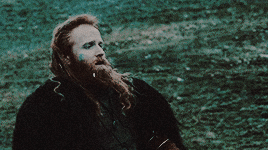
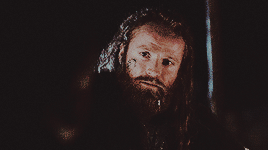
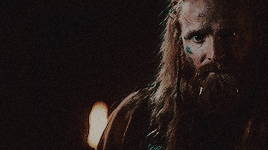
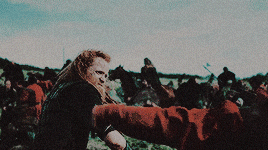
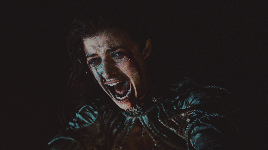
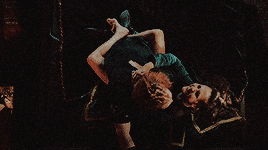
You are my wife. My QUEEN. Act like it ! I may be your wife. But you will never be my KING.
#lmao their relationship is toxic afff#i love it#the dagda. | the druid king of war *#the mórrigan. | fae queen of war & magic *#ooc. | * edits and art !#dynamics. | the mórrigan & the dagda *
1 note
·
View note
Text
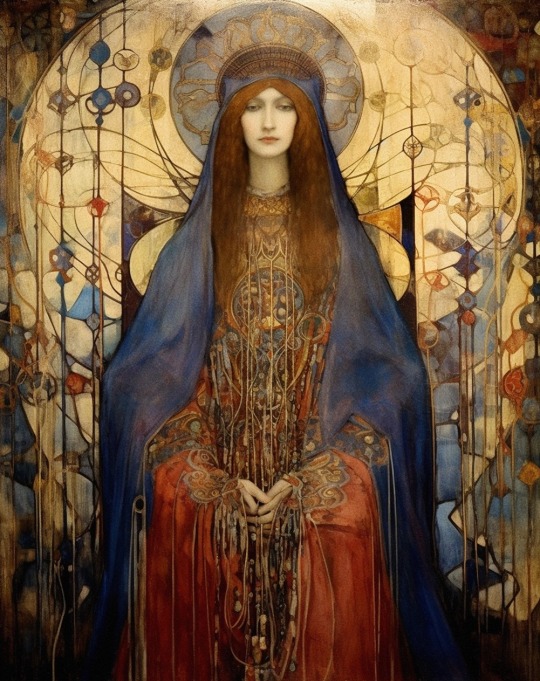
Brigit Druid Goddess Talon Abraxas
Brigit is a ‘pan Celtic’ goddess, who was worshipped by both the Goidelic and Brythonic Celts in the British Isles and beyond. She is a solar deity, who once hung her mantle on a sunbeam. In Celtic mythology, Brigit is the daughter of the Morrighan and the Dagda, the Good God and Chief of the Tuatha de Danaan, the ancient fairy race of Ireland, and the sister of Ogma, who invented the Ogham alphabet. She was the wife of Bres, King of the Fomorians (who were at war with the Tuatha de Danaan). Brigit was said to have been the mediator of peace between the two ancient warring tribes. She was the mother of the Three Gods of Danu – Ruadan, Iuchar and Uar. These three Gods were said to have married the three princesses of Ireland – Eire, Fodhla and Banbha. In other sources, Brigid is the daughter of Boann, the Goddess of the River Boyne in Ireland. Boann (bo fhionn) means ‘white cow’, an association she shares with Brigid. Brigit is primarily the patron Goddess of poets, healers and smiths. She is also a patron of other womanly arts – midwifery, dyeing, weaving and brewing, and the guardian of children and farm animals – particularly cows. The island of Ireland itself is said to be the green mantle of Brigit. She is also said to be the patron of travellers, sailors, and fugitives. She is specifically a patroness to the Druids in her aspects of poetry (Bards), healing and prophecy (Ovates) and blacksmithing (Druids).
68 notes
·
View notes
Text
Celtic Pathworking
These are the Gods/Goddesses I will include in my book. It will be a ceremonial magic grimoire dedicated to Celtic-Irish Gods and Goddesses
Celtic Pathworking-Irish
1. Brighid-Celtic (Irish). One of the triple Goddesses of the Celtic pantheon. She is the daughter of The Dagda, the All Father of the Tuatha de Danann, one of the most ancient people of Northern Europe. Some say there are actually three Brighids; one is in charge of poetry and inspiration; one is in charge of midwifery and healing, and the last is in charge of crafts and smiths.
She probably began as a sun Goddess. According to legend, she was born at sunrise and a tower of flame beamed from her head.
As Goddess of fire and water, she is immortalized by many wells and springs. Most important of her monuments, though, was a shrine at Kildare where there was a perpetual flame burning for Brighid. It was tended by nineteen virgins called the Daughters of the Flame, wearing deep crimson habits and bearing swords. They would not talk to men, nor could men come near the shrine. Her feast is St.Brighids Days in Ireland and is the Pagan Festival of Imbolc
When Christianity began its onset, so loved was Brighid that she was made a saint. However, the upkeep on her flame was considered pagan by the church and it was extinguished out of more than a thousand years of burning. St. Brigit remains one of the most popular Irish saints today, along with Saint Patrick.
Identical to Juno, Queen of Heaven. Symbolizes human potential. Also known as Brigit, Brigid, Brigindo, Bride.
Dark the bitter winter, cutting its sharpness, but Bride's mantle, brings spring to Ireland.
2. Morrigan-"The Great Queen". Celtic Goddess of war and death who could take the shape of a crow or raven. Supreme warrior Goddess. She is associated with the sometimes frightening aspects of female energy. Married to the Daghda. She symbolizes the power of fertility, the dark Goddess' prowess, death, war, fate. A shapeshifting war Goddess of sensuality, magic, prophecy, revenge, war. Known as Great Queen, Supreme War Goddess, Queen of Phantoms, and Specter Queen, she kept company with Fea (hateful), Badb (fury), and Macha (battle). Also known as a Triple Goddess form Maiden, Mother and Crone. Variants: Morrigu, Morrighan, Morgan.
3. Babd Catha-Celtic (Irish) Goddess of war. Mother aspect of the triple Goddess. Symbolizes life, enlightenment, wisdom and inspiration. Sister of Macha, the Morrigan, and Anu, the name of this Goddess means "boiling," "battle raven," and "scald-crow". Known as Cath Bodva in Gaul. A Mother Goddess and Triple Goddess and part of the trio for which Ireland was named including Eriu and Fotia or Fodla, Badb's cauldron boiled with the ever-producing mixture that produced all life. Variants: Badhbh, Badb, Banba
4. Balor-Celtic. Although he was born with two good eyes, one was ruined in an accident; the eye is so hideous that he only opens it in battle so that its venom will slay whoever is unlucky enough to catch glimpse of it; his daughter marries Cian. Also known as Balor of the Evil Eye.
5. Bel-Celtic (Irish) Fire and sun God, also God of purification, science, fertility, crops and success. Symbolizes element of fire, health. A sun and fire God closely connected with the Druids and the festival of Beltaine (May 1). Variants: Belenus, Belinos, Beli Mawr (Wales).
6. Branwen-Celtic (Irish)Goddess of love and beauty. The sister of Bran the Blessed and Manannan mac Lir, daughter of Lir, and wife of the Irish king Matholwch. Died of a broken heart after Bran's death. Known as Venus of the Northern Seas
7. Cailleach-Celtic (Irish & Scottish) Goddess of disease and plague. A Destroyer, or Crone, Goddess, she was also called "Veiled One". As the Crone, she ruled with the Maiden and the Mother. Monsterous Dogs guarded the gates of her afterworld realm where she received the dead. Celtic myth has her gatekeeper dog named Dormarth "Death's Door". Irish bards who could curse with satire were often called cainte "dog".
8. Camalus-"Of the Invisible Sword", "Heaven". Celtic God of war and sky. Similar to Mars, only more vicious.
9. Cernunnos-Celtic God of virility, fertility, life, animals, forests and the underworld. The Horned or Antlered God is born at the winter solstice, marries the Goddess at Beltane, and dies at the summer solstice. He alternates with the Goddess of the moon in ruling over life and death, continuing the cycle of death, rebirth and reincarnation.
Symbolizes element of earth, love, fertility, death the virile male aspect and the dark half of the year. The two fold aspect of the God year with the Greenman or Jack o' the Green being his light aspect. This takes on a similarity to the Oak King and Holly King legend. Leads the wild hunt at Samhain, hence the day best associated with the Dark Lord.
Also A consort to the mother Goddess. Druids knew him as Hu Gadarn, the Honored God. Ancient Celtic images show him seated in a lotus position, naked, with antlers or horns on his head. Christians demonized this benevolent God for easy conversion and is where the image of the Christian devil comes from(Couldn't be further from facts nor truth but alas yet another tragedy of misdeed and "bearing false witness", to quote a commandment).
Animals that were sacred to him: bull, ran, stag, and horned serpents. Variants: Cerowain, Cernenus, Herne the Hunter.
10. Cyhiraeth -Celtic Goddess of streams, her scream fortells death. Coincides with the Beansidhe or Banshee
11. Dagda-Celtic (Irish) God of the Earth and All Father. He mates with his wife The Morrigan or Raven on the Celtic New Years Eve (Samhain) Also had a secret love of Boann. Also a God of death; the father of Brighid.
A formidable fighter, but a God of simple tastes who dresses in a brown tunic, hooded cape and leather boots. Dagda had a club which could slew nine men with one end, but could bring back life with the other end. He possessed two swine, one of which was perpetually roasting, the other perpetually growing. His other symbols are the bottomless cauldron of plenty and a harp with which he controls the seasons and is the harp that is seen on many Irish flags and symbolizes Ireland to this day(Hehe, Including the signature symbol for Guiness Beer). God of the arts, knowledge, magic, music, prophecy, prosperity, regeneration. Known as the "Good God" and "Lord of the Heavens," he was one of the high kings of the Tuatha De Danaan and had four great palaces under hollow hills.
12. Danu -Celtic (Irish) Goddess, the mother of The Dagda the All father, Creation Goddess, and Mother of the Tuatha de Danaan. Aspect of the Morrigan or Triple Goddess. Considered to have been an early form of Anu, the Universal Mother. Patroness of wizards. Symbolizes rivers, water, wells, prosperity, magick, and wisdom. Tuatha de Danaan literally means Children or Clan of Danu. The Tuatha de Danaan are the Fae folk of Ireland. EXTREMELY potent Goddess form I easily connect with and work very closely with, personally for most of my rituals and castings. Her celebrations were either Beltane and/or Litha (Summer Solstice)
13. Labraid Celtic (Irish) God of the underworld. Corresponds with Gwynn Ap Nudd.
Math Mathonwy -Celtic ( Irish & Welsh) God of magick, sorcery, and enchantment. Legend has him as a king who was also a God of enchantment and magick.
14. Myrrdin-Merlin", Celtic (Britania, Irish & Welsh) Sorcerer, Druid, Wizard and Magician. Originally an ancient Welsh Druid, priest of the old religion, and great magician. He was transformed in the later Arthurian sagas. Tradition says he learned his powerful magic from the Goddess in her forms of Morrigan, Viviane, Nimue, and Lady of the Lake. Legend says he now lies sleeping in a hidden crystal cave. Variants: Merddin, Merlyn.
15. Neit-God of Battle
16. The White Lady-Celtic all Celtic countries; goddess of death and destruction. Called the Dryad of Death and Queen of the Dead, this goddess was a Crone aspect of the Goddess.
���3�����T|��
17 notes
·
View notes
Text
Which Goddess are you? [Celtic Edition]

Morrigan
Goddess of war, death, and destiny.
Appearing before great battles as the goddess of fate, the Morrígan offered prophecy and favor to heroes and gods alike. As the Phantom Queen, she circled the battlefield as a conspiracy of ravens to carry away the dead. She was at once both a single deity and a triple goddess, made up of Ireland’s most powerful goddesses. Her husband was the Dagda (or the Great God), who came to her for prophecy before major battles. She is associated with several sacred and natural sites across Ireland. The Morrígan was first and foremost a goddess of war and death. She was also the goddess of prophecy and fate, and as such saw the future of all things, including the end of the world. She was all-knowing, and would occasionally share her knowledge with others (for a price). Her prophecies were never wrong and her wordings were exact, if somewhat poetic. Her appearance to royalty and warriors also represented the side she favored in a battle. The Morrígan’s association with the raven stemmed from the bird’s constant presence on the battlefield. The Morrígan was a shapeshifter who took many forms; she would often appear in multiple forms throughout a single story. The most common of these forms were a shapely maiden, a battle ready warrior-queen, an old crone, and a raven. While she could take the form of other animals beyond a raven, the Morrígan did so less frequently.

Flidais
Goddess of cattle, forests, and fertility.
Flidais is the beautiful goddess of deer, also known as “Fairy cattle.” She is a goddess of the forest, wild nature, and rampant, joyful sexuality. Flidais may go through thirty men a day–unless she has Fergus, who alone is able to satisfy her. (The feeling is mutual; allegedly Fergus needs seven women to replace Flidais. The only other one who can fulfill him is Maeve.) Flidais is a spirit of abundance. She also owns a herd of magical cows: her prize cow gives enough milk daily to feed three hundred families. Flidais is the guardian of the forest, its trees and animals. She also allegedly has a soft spot for human outcasts; those marginalized by society; people who, once upon a time, would have been inclined to take shelter in the forest.

Áine
Goddess of summer, wealth, sovereignty, love, protection, and fertility. Áine is thought to mean “brightness, glow, joy, radiance, splendour, glory, fame”. She is associated with Midsummer, the Sun and Moon; the element Air; the direction South West; one of the sacred herbs of Druids, Meadowsweet; and County Limerick, where the hill of Knockainy (Cnoc Áine) is found. In her role as Sun Goddess, she could take the form of ‘Lair Derg’, a red mare that no one could outrun, in order to walk among her people. Her sacred animals are red mares, rabbits, and swans. Áine is thought to be the daughter of King Eógabail/Eoghanach, a member of the Tuatha Dé Danann and the foster son of the sea god Manannan Mac Lir. Other sources state that she is the daughter of the Dagda and sister to Brigid. She is also thought to be the sister of Aillen and/or Fennen. Áine was also known as a Love Goddess, and people would worship her in the hope that she might bestow sexuality, fertility, abundance and prosperity upon them. Through her many relationships with human men, she is thought that she gave birth to a magical Faerie-Human race, which is how she gained her name as Queen of the Faeries. One of the myths surrounding Áine describes how she sat in her birthing chair on Lughnasadh and gave birth to a sheave of grain. It is believed that by performing that act, Áine gave the gift of grain to the people of Ireland.
Tagging: @strykingback, @flxwerofhell / @crystalmelodies, @spiritualsymbiosis, @gearlessjunkdogjoe, @lachrymosestorm & anyone else who feels up for the quiz!
#{Memes - Dash Games}#| ic - Violent Violet - She makes Angels Scream and Devils Cry |#| ic - Maxie - Artemis's Arrow |#| ic - Hope - She who Survives |#alright i'm done now
0 notes
Photo

We have a returning citizen in Mount Phoenix:
Dagda, the God of Life and Death, whose origins stem from Ancient Scandinavia. He is now a police officer at the MPPD.
FC NAME/GROUP: Lee Dong-Wook; Actor
GOD NAME: Dagda; God of Life and Death PANTHEON: Celtic
OCCUPATION: Police Officer at MPPD
HEIGHT: 6’0” (1.84cm)
WEIGHT: 171lbs (78kg)
DEFINING FEATURES: Dagda had very sharp and defining masculine features including a sharp nose and jawline, almond-shaped eyes and thin lips. Dagda has dark chocolate hair, usually slightly ruffled.He has a very well-built and sturdy frame with muscle. Along his left side of his body remains a large, faded scar from a wound from so long ago that stretches from his left hipbone to just above his left pectoral.
PERSONALITY: From the stories and legends from ages passed, the Dagda has always been perceived as a gentle, wisdom-filled god that held an almost fatherly vibe. He is one who would help guide and teach others as well as learn from the world around it as it shifts. He isn’t one to resort to violence or anger, but if but in a situation like that he would calmly take an approach. Very wise and careful with words, Dagda isn’t one to dwell or dread on topics at hand. He’ll get them done and continue on. As well, he is a very gentle and caring lover, having the one affair but always watching over his children and his lovers. Kind at heart and (ironically) down to earth, the god sees in not doing harm unless provoked.
HISTORY: Back in the forests and never-ending plains of Ireland, there was a god who was known as Daghdha; The Dagda. He was the god of fertility, wisdom, druidry, magic, agriculture, strength, life and death. He was often liked up to gods such as Odin as to compare his power to the father of the Norse gods. Dagda was a Druid, wearing a cloak while brandishing the lorg mór; a club which with the business end would bring death while the hilt brought life. He also manifested the coire ansic; a cauldron that never runs empty and Uaithne; a harp that can manipulate men’s emotions and change the seasons.
Dagda was found roaming throughout Brú na Bóinne; king of the Tuatha Dé Danann; a race of supernatural beings who conquered the Fomorians and inhabited Ireland. Throughout his life, he had Boann as his lover whom also had his daughter Breg. Prior to a war against the Fomorians, he coupled with Mórrigan in exchange of a battle plan. While having an affair with Bóand, who he later had a child with named Aengus, Dagda would give his children the lands to watch over. He never faltered, nor gave up his position that he was given among the gods. During the battle at Brú na Bóinne, he succumbed to a large wound caused by the hand of Cethlenn, causing his body to fall to the ground and him to enter a state of comatose.
Many centuries later, waking up from his comatose sleep he was surprised to see the world had changed around him. His land was now taken by someone else. Noticing as well that the blood he spilled made flowers bloom from his wound. Deciding to explore this brave, new world, he seeks new answers to the questions he had slowly compiled up. Hearing through the trees and rivers about a place were the strongest of Gods now rest, he began his journey, making his was though the lands to search for this scared new place.
POWERS: Dagda being a god known for magic and fertility can conjure the earth and create life from his hands. Nature is his closest ally, meaning that when he’s in a more wild area he is more focused and able to conjure greater life. As well, he is able to turn any weapon into a life bringer and taker by his hands. He switches his club out for a walking cane or night stick depending on what he’s doing.
Seeing that he has a vast grasp on wisdom as well, he can aid and give knowledge to those who seek it. Only denying it for those who seek it for greed.
STRENGTHS:
Able to kill those with his weapon but bring them back to life.
Can conjure nature by creating life such as plants, trees and other plant based life as well as killing them off only if he puts enough energy into it.
He is a very calm, fortified and strong-willed being, making him perfect for any type of combat or job needing strength; I.E. Police Officers.
Able to make smart and preside decisions in tight situations.
WEAKNESSES:
Cannot fully control nature, due to him being centred around life and death; the only extent to him doing so is by his harp that controls the seasons.
Unable to bring the dead that were killed by a different mean from his weapon, meaning if they weren’t killed by Dagda they cannot be revived.
He can become enraged when people/nature become threatened, making him more prone to lash out.
Takes longer for his wounds to heal, making him more susceptible to bleeding out.
1 note
·
View note